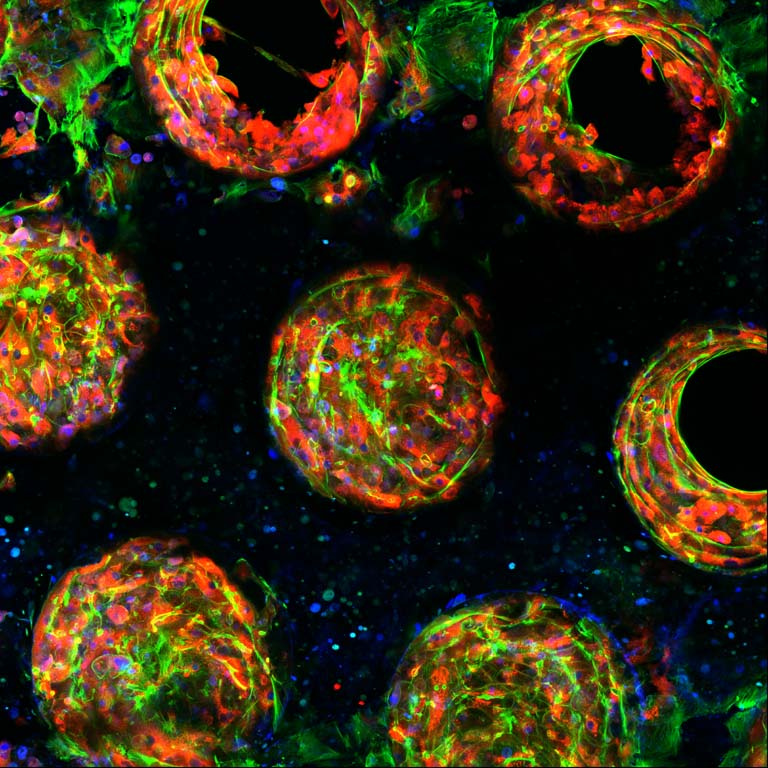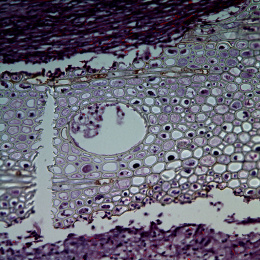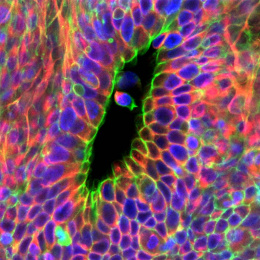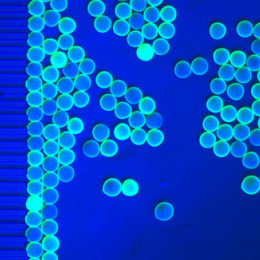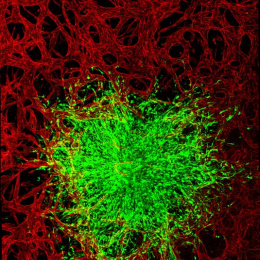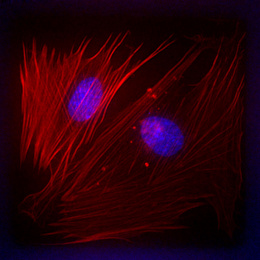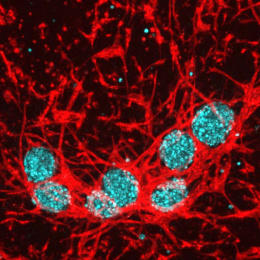Liver Cells Organize on a Bioreactor Scaffold 2
Liver Cells Organize on a Bioreactor Scaffold 2
Alex Wang
MIT Department of Biological Engineering, Koch Institute at MIT
These series of images depict hepatocytes in a pump-driven bioreactor called the LiverChip. The grid of holes in the scaffold are channels that allow oxygenated media to flow out through them, simulating blood flow. Hepatocytes, the main functional cell type in liver, are seeded on top of the scaffold and organize inside and on top of the channels.
Growing healthy, physiologically relevant liver tissue in the lab will allow us to utilize it for a wide range of biomedical applications. Human hepatocytes are especially difficult to culture and sustain in vitro, but utilizing our bioreactor and organoid culture methods, we can create and sustain robust, reproducible tissue formation and hepatic function for over two weeks. In [this image], human cells are visualized by staining their nuclei (blue), their cellular filaments (green), and albumin (red), which is a protein highly secreted by hepatocytes.
